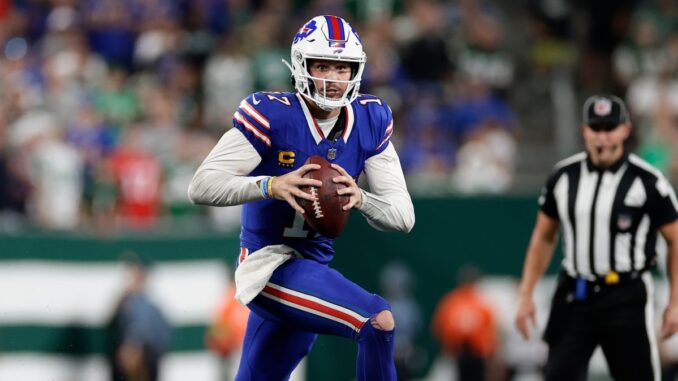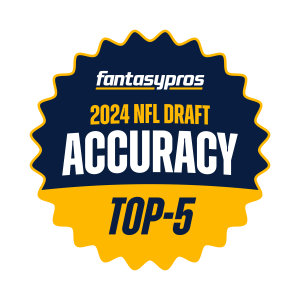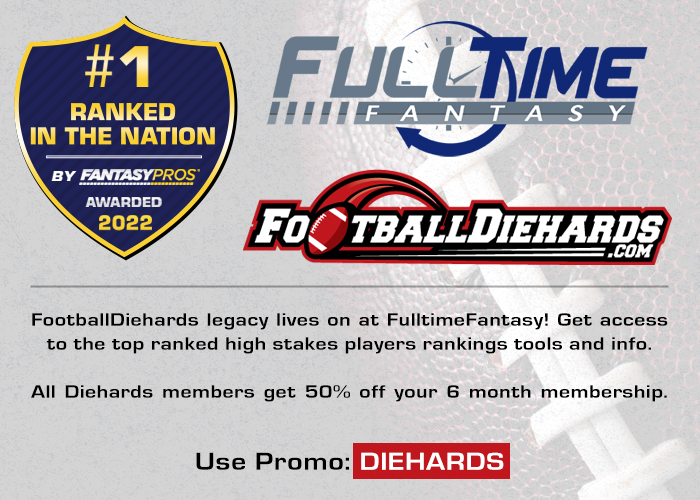
Fantasy Football Auction Strategy (2025)
Understanding Auction Basics
Auction Prep
- Scoring System: Standard, PPR (points per reception), or half-PPR scoring affects the value of positions. In PPR leagues, pass-catching running backs and wide receivers gain value, while in standard leagues, workhorse running backs dominate.
- Roster Requirements: Understand the number of starters and bench spots. Deep rosters increase the value of depth players, while shallow rosters prioritize studs.
- Budget and Lineup Rules: Confirm the auction budget (usually $200) and whether there are flex positions, superflex (allowing a second QB), or other unique rules.
- Number of Teams: In a 12-team league, talent scarcity is higher than in an 8- or 10-team league, affecting how aggressively you bid for top players.
2. Create a Tier-Based Player Value System
- Elite Tier (Top RBs/WRs): Players like Bijan Robinson or Justin Jefferson, who might cost $60-$80 in a $200 budget.
- High-End Starters: Reliable starters like Alvin Kamara or A.J. Brown, typically costing $20-$40.
- Mid-Tier Values: Players like Garrett Wilson or Sam LaPorta, often available for $10-$25.
- Late-Round Bargains: Sleepers and depth players, usually $1-$5.
Adjust your auction values based on your league’s scoring and trends from mock drafts. Tools like average auction values (AAV) help estimate how much players typically cost in similar leagues.
- How much top-tier players cost in your league’s format.
- When certain positions (e.g., QB, TE) tend to be nominated.
- How aggressive or conservative your leaguemates bid.
Mock drafts also help you practice sticking to a budget and adapting when prices deviate from expectations. Use our Mock Draft Simulator as a great starting point and customize it to fit your league’s settings.
- Do they overspend on stars early?
- Are they position-focused (e.g., prioritizing RBs over WRs)?
- Do they chase rookies or stick to veterans?
Understanding their habits allows you to exploit their weaknesses, such as nominating players they’re likely to overbid on.
Budgeting Strategies
There are three primary approaches to roster construction in auctions:
- Stars and Scrubs: Spend heavily (70-80% of your budget) on 2-3 elite players, then fill the roster with $1-$5 sleepers and rookies. This strategy maximizes upside but risks weak depth if your stars underperform or get injured.
- Example: Spending $50 on Christian McCaffrey, $60 on Ja’Marr Chase, and $30 on a mid-tier QB like Patrick Mahomes, leaving $60 for the rest of your roster.
- Best for: Leagues with deep benches or high waiver wire activity, where you can find replacements for cheap players.
- Balanced Approach: Distribute your budget evenly across positions, targeting high-end starters and reliable mid-tier players. This minimizes risk but may lack the ceiling of a stars-and-scrubs roster.
- Example: Allocating $30-$40 each for a top RB, WR, and QB, then $10-$20 for solid starters and $5-$10 for depth.
- Best for: Leagues with moderate depth or standard scoring, where consistency is key.
- Value-Based Drafting: Focus on players who provide the best return on investment, often in the $10-$25 range. This approach avoids overpaying for stars and builds a deep, flexible roster.
- Example: Targeting players like Alvin Kamara ($25), Chris Olave ($24), and Evan Engram ($15) while avoiding $50+ players.
- Best for: Managers who excel at identifying sleepers and managing waivers.
2. Allocate Your Budget
A common budget split for a 12-team, $200 PPR league might look like this:
- Starters (70-80%): $140-$160 for your starting lineup (QB, 2-3 RBs, 2-3 WRs, TE, K, DST).
- Bench (20-30%): $40-$60 for depth players, sleepers, and handcuffs.
- Reserve: Always save $1-$2 per roster spot for the late stages to avoid being shut out of bidding.
Adjust based on your strategy. For stars and scrubs, allocate 80% to 2-3 players; for a balanced approach, spread funds more evenly.
3. Account for Positional Scarcity
Positional scarcity influences how much you should spend:
- Running Backs: In most leagues, elite RBs are scarce and command $50-$80. Mid-tier RBs ($15-$30) can be valuable if you miss out on the top tier.
- Wide Receivers: WRs have deeper talent pools, especially in PPR leagues, so you can often find starters for $20-$40.
- Quarterbacks: In single-QB leagues, QBs are abundant, so avoid spending more than $15-$25 on elite options like Josh Allen unless it’s a superflex league.
- Tight Ends: Elite TEs like Brock Bowers or Sam LaPorta ($20-$40) provide a significant edge, but mid-tier TEs ($5-$15) like David Njoku are often sufficient.
- Kickers and Defenses: Spend $1-$2, as these positions are highly variable and streamable.
Bidding Tactics
Bidding in an auction draft is both an art and a science. You must balance aggression with patience while manipulating the auction to your advantage.
1. Master the Nomination Phase
In most auctions, managers take turns nominating players for bidding. Use nominations strategically:
- Early in the Draft: Nominate players you don’t want but expect others to overpay for. This drains their budgets, leaving more value for you later. For example, nominate a mid-tier player like Tyreek Hill early, hoping someone bids $35 when their value is closer to $25.
- Mid-Draft: Nominate players in positions you’ve already filled to reduce competition for players you still need. If you have your QB, nominate another QB to divert funds.
- Late in the Draft: Nominate players you want to ensure you control their price. If you’re targeting a sleeper like Kaleb Johnson, nominate them to avoid others driving up the price.
2. Control the Pace of Bidding
- Bid Aggressively Early: If you’re targeting a star, don’t hesitate to push the bidding to your max price quickly to discourage others.
- Slow Play Value Picks: For mid-tier players, bid incrementally to avoid unnecessarily inflating prices.
- Bluff Occasionally: Bid on players you don’t want to drive up prices, but be cautious not to get stuck with them.
3. Watch the Room
Pay attention to your opponents’ budgets and rosters:
- If a manager has a low budget late in the draft, they’re less likely to compete for players, giving you a chance to snag bargains.
- If a manager needs a specific position (e.g., they have no RB), nominate players at that position to force them to overspend.
4. Avoid Overpaying
Stick to your pre-draft player values. If a player exceeds your max bid (e.g., $65 for Saquon Barkley when you valued him at $60), let them go. There will always be other options.
5. Capitalize on Late-Round Bargains
As budgets dwindle, managers often become conservative, leaving value on the table. Target sleepers, rookies, or high-upside bench players for $1-$5. Examples include breakout candidates like Brashard Smith.
Roster Construction Tips
Building a balanced and competitive roster requires aligning your bidding with your overall strategy.
1. Prioritize Positional Advantage
Elite players at RB and TE provide a significant edge because of their scarcity. Spending on a top RB like Bijan Robinson or a TE like Trey McBride can give you a weekly advantage over opponents who rely on mid-tier options.
2. Build Depth Strategically
Your bench should include:
- Handcuffs: Backup RBs who would see significant work if the starter is injured (e.g., Zach Charbonnet behind Kenneth Walker).
- Sleepers: High-upside players with breakout potential.
- Positional Depth: Ensure you have enough RBs and WRs to cover bye weeks and injuries.
3. Don’t Neglect Kickers and Defenses
While you shouldn’t spend more than $1-$2, don’t leave these positions empty. A reliable kicker like Brandon Aubrey or a strong defense like the Broncos can provide consistent points. But to a reasonable degree. Anything more than a couple of bucks for these two is money lost for more valuable positions.
4. Adapt to the Auction’s Flow
If elite RBs are going for $80 when you budgeted $60, pivot to a WR-heavy strategy or target mid-tier RBs. Flexibility is key in auctions, as prices can fluctuate based on league tendencies.
Common Mistakes to Avoid
- Blowing Your Budget Early: Spending 90% of your budget on three players leaves you with no depth or flexibility.
- Chasing Every Player: Don’t get caught in bidding wars for players you don’t need just because they seem like a “deal.”
- Ignoring Positional Runs: If multiple QBs or TEs are nominated early, prices may spike. Wait for the market to settle before bidding.
- Failing to Plan for Bye Weeks: Ensure your roster has enough depth to cover bye weeks without relying on waivers.
- Underestimating the Waiver Wire: Don’t overspend on depth players if your league has an active waiver wire, as you can find replacements during the season.
Advanced Strategies
For experienced managers looking to gain an edge, consider these advanced tactics:
- Budget Manipulation: Intentionally bid up players to drain opponents’ budgets, but be careful not to win players you don’t want.
- Endgame Dominance: Save $10-$20 more than your opponents for the late stages, allowing you to outbid them for sleepers and depth players.
- Psychological Warfare: Nominate players your opponents are emotionally attached to (e.g., local team players) to force overbidding.
- Positional Scarcity Exploitation: In superflex or TE-premium leagues, prioritize QBs or TEs early to capitalize on their scarcity, forcing others to overpay later.
Post-Auction Strategy
Your work doesn’t end when the auction concludes. To maximize your team’s potential:
- Monitor the Waiver Wire: Pick up breakout players or replacements for underperformers.
- Trade Strategically: Use your depth to trade for upgrades or address weaknesses.
- Stay Active: Continuously evaluate your roster and make adjustments based on injuries, role changes, or emerging trends.
Mastering a fantasy football auction draft requires preparation, discipline, and adaptability. By understanding your league’s settings, creating a tier-based value system, budgeting wisely, and employing smart bidding tactics, you can build a championship-caliber team.
Whether you opt for a stars-and-scrubs, balanced, or value-based approach, the key is to stay flexible and capitalize on opportunities as they arise. With these strategies in hand, you’ll be well-equipped to dominate your auction draft and set the stage for a successful fantasy football season.
WARNING!
Don’t let a fancy website fool you! You need trustworthy rankings to win at fantasy football. We’ve got them! 150+ websites ranked us Top 2 in the industry for our draft rankings.
Get expert advice from Captain Jody Smithand our team of high-stakes winners. Use code JODY30 for 30% off your first two months.
Ready to bring home that championship?




